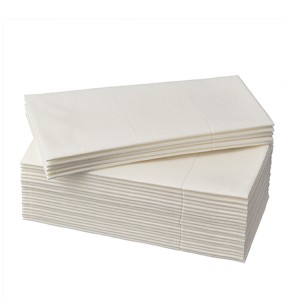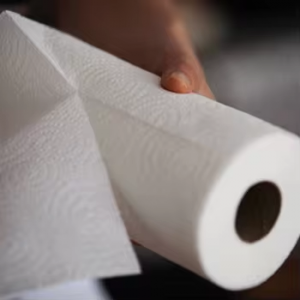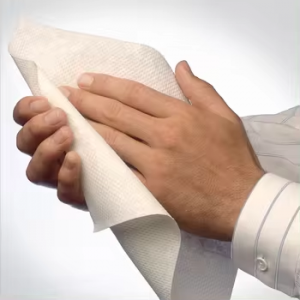With the development of the times, people’s quality of life is improving day by day, people are more and more in pursuit of a healthy, fast and convenient way of life, as a kind of convenient, daily necessities, disposable paper products have become our essential living items. It has the characteristics of lightweight, thin, easy to carry and use, can effectively reduce the risk of cross-infection, keep. At the same time, the environmental protection, health and quality of disposable paper products have gradually become the concern of the majority of consumers.
What is disposable paper products?
The main raw materials of disposable paper products are: virgin wood pulp, virgin non-wood pulp (such as grass pulp, bamboo pulp, bagasse pulp), virgin mixed pulp (virgin wood pulp, virgin non-wood pulp mixed) or recycled pulp. The disposable paper products circulating in the market nowadays are mainly natural-coloured paper using 100% natural virgin fibre pulp as raw material, as well as white paper with increased bleaching process.
Classification of disposable paper products
1. Tissue paper
Tissue paper is divided into paper towels (facial tissue), paper napkins (napkins), paper handkerchiefs (handkerchiefs).
3. Hand towels and kitchen paper towels
Common problems in life
How to distinguish the quality of disposable paper products
1.Raw materials
The raw materials of disposable paper products may be virgin fibre pulp or pure fibre pulp, which are very different and consumers should pay attention to differentiate between them. For example, virgin wood pulp and pure wood pulp look similar, but in fact virgin wood pulp uses new raw materials, while pure wood pulp may be mixed with recycled or reclaimed second-hand materials. Comparatively speaking, 100% virgin fibre pulp is better and can be used with confidence.
2.Quality Grade
Disposable paper products are generally divided into three grades: superior, first-class and qualified products, which have different softness, water absorption and toughness, with superior > first-class > qualified products. If the conditions allow, you can choose superior products.
Can I use disposable paper products that have been opened for a long time?
Such paper may contain a large number of pathogenic bacteria such as Staphylococcus aureus, Pseudomonas aeruginosa, Streptococcus haemolyticus and coliform bacteria. If people with weak constitution such as children or the elderly use this kind of paper for a long time, it may affect their health and cause infectious diseases and symptoms such as diarrhoea, vomiting and fever.
Are scented disposable paper products safe?
The content of harmful substances in qualified paper products must meet the standard requirements. In other words, whether they are scented or have patterns, as long as they comply with national standards, such paper products generally do not have quality problems. However, scents and pigments do have the potential to cause allergies. From a health point of view, this type of paper is usually not suitable for infants and children, sensitive people are also recommended to use with caution.
Is natural paper better than white paper?
There is no obvious difference between the two. In order to look cleaner, bleaching is added to the production process of white paper, and the bleach used is usually organic chlorine, which is harmful to the human body, degrades very slowly in boiling water and risks polluting the environment. Native household paper (native tissue, native paper, native hand towel) is produced from 100% native virgin fibre pulp, which has a high lignin content due to the lack of a bleaching process, making the paper rough, hard and rotting when exposed to water. To compensate for this defect, more softeners and wet-strengthening agents are added to natural-coloured paper. As long as bleaching agents, softeners and wet strength agents are used under regulated conditions, the product is not hazardous to human health.
Post time: Jul-19-2024




